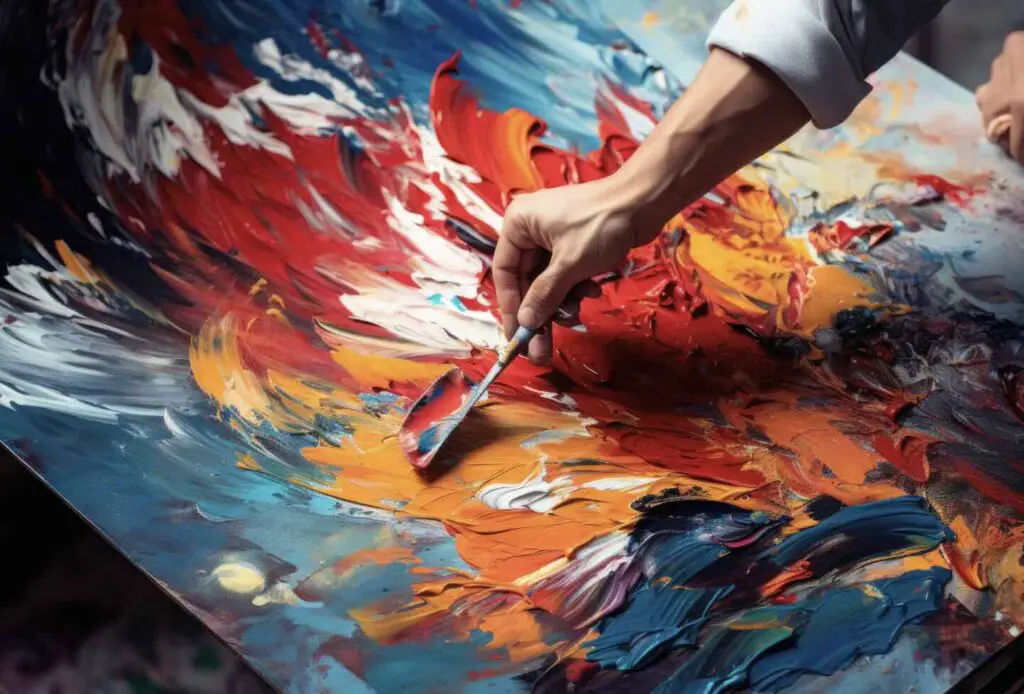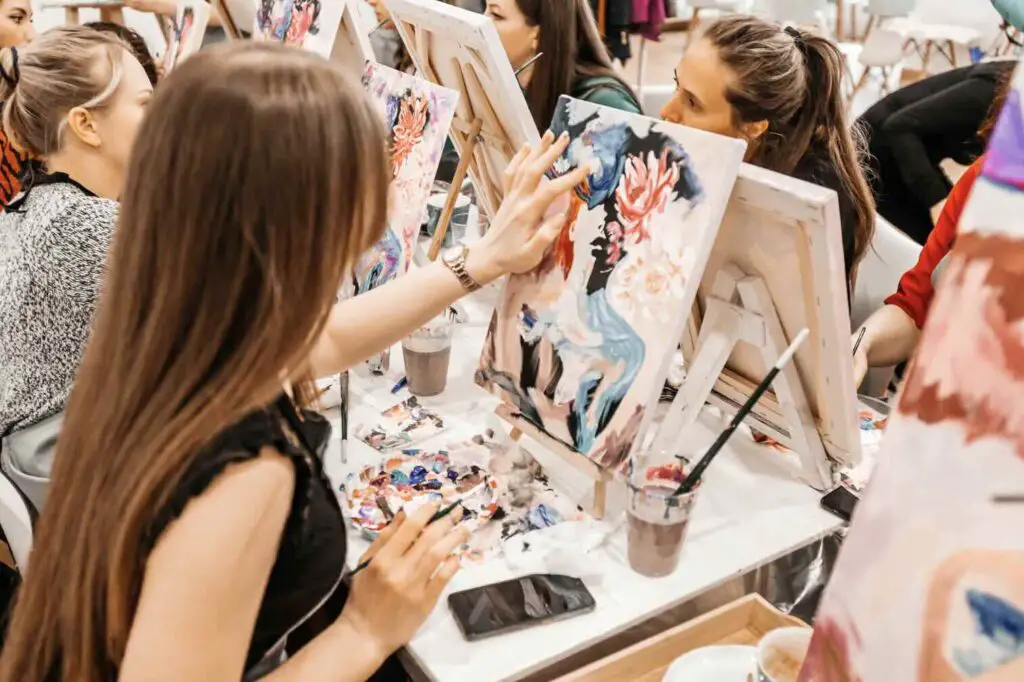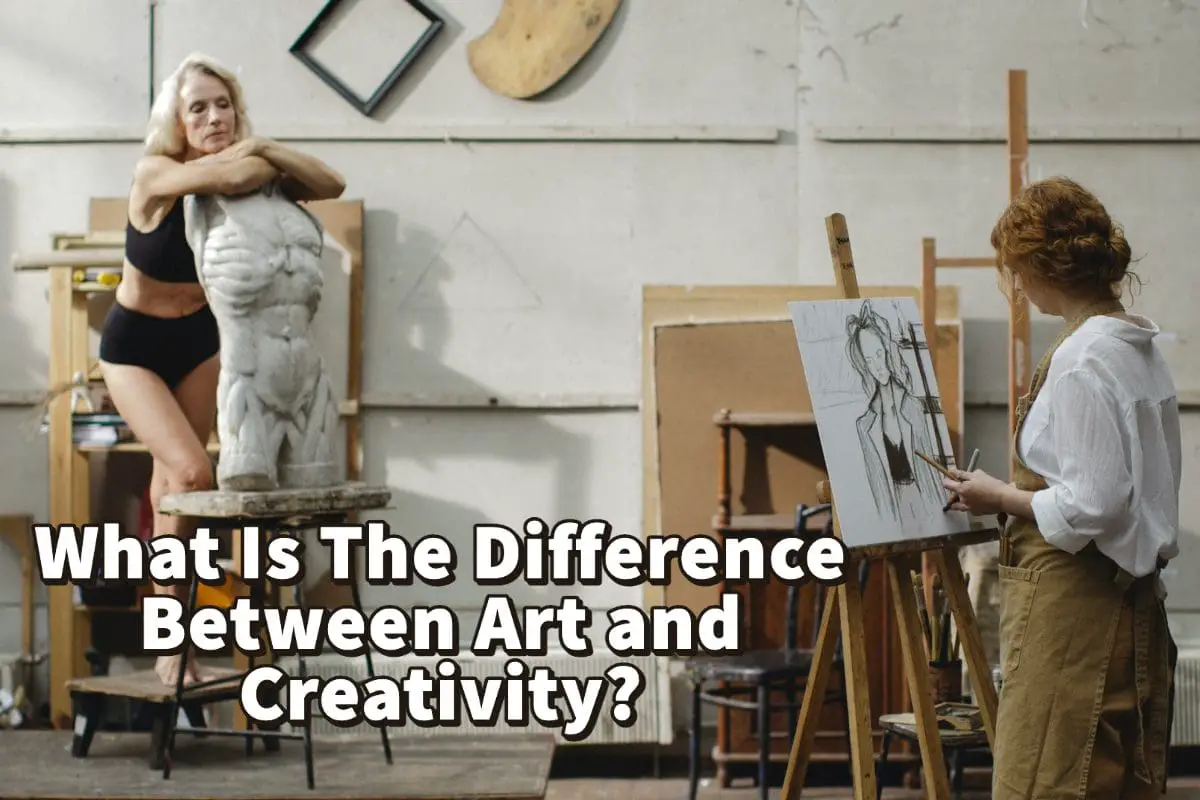Being artistic and creative may seem the same, but there are some unique differences. After all, you also need to be a creative person to be good at art.
A person can still be very creative even if they cannot draw, paint, or make sculptures. Having artistic abilities usually includes skills like drawing, painting, or sculpturing. Becoming an artist requires art skills either via education or being self-taught. On the other hand, a person can have a natural creative ability.
Table of Contents
Art Vs. Creativity
It can sometimes be confusing between what it means to be an artist or to have artistic ability and what it means to be a creative person. Just because someone cannot draw or paint does not mean they are not creative.
The words art, artistic, and creativity may all seem similar, but there are some differences.
Art and Artistic Abilities
Having an artistic ability or creating art usually includes skills such as painting, drawing, sculpturing, or even dance or musical composition. These skills require learning and practice.
Someone becomes an artist either because they are self-taught or take advanced classes such as a university art degree. Art and being an artist require some education, hard work, and practice.

If you look at the history of all great artists, they all had some educational background or were self-taught in their chosen field of art. They have a talent for their art, but they also developed that artistic talent through their hard work and study.
Whenever I have a question about what a word means, I will turn to the dictionary to see what the definition of the word is. The Oxford Dictionary defines artistic as:
“Having or revealing natural creative skill.”
OXford dictionary
According to this definition, being artistic means that somebody has natural ability and creativity, but creativity alone does not make someone an artist.
Creating art requires artistic ability and creativity, but this alone will not make you an artist or allow you to create great art; producing great art requires training and skill.
Creativity Abilities
On the other hand, creative ability is your ability to use your imagination to create something. A person could be very creative but cannot draw or paint, sculpt, dance, or do anything considered an art form.
Someone may be highly creative in planting a garden or decorating their house. That individual may have no ability to paint, sculpt or draw anything.
We would consider them creative people because they have the talent to use their imagination to create something unique or do something amazing with the creative talent they have.
The Oxford Dictionary defines creativity as follows:
“the use of the imagination or original ideas, especially in the production of an artistic work.”
Oxford Dictionary
Creativity then is about using your imagination and having original ideas. Even though, as the Oxford Dictionary defines it has a lot to do with artistic work, creativity is not limited to just artistic works of art.

In fact, creativity is something that is used a lot in the workplace. A person can be highly creative in a business environment but lack artistic ability.
Three Types of Creativity Explained
Creativity has been studied and researched; creativity is considered an essential aspect of our daily lives.
Companies often look for individuals who can be creative or “think outside the box.” Companies seek creative individuals because they understand that creativity can help their organizations grow.
Creativity is a broad field; it is not just limited to an individual’s artistic ability but also has to do with problem-solving and other cognitive skills.
3 Types of Creativity:
Creativity – Old Ideas Into A New Idea
The first type of creativity is when somebody sees an old idea, and says “Oh, I have a new idea for this.” Researchers call this combinational creativity; you combine an old idea to make it something new.
In art, this type of creativity happens quite a bit. An artist may see a painting that someone like Vincent van Gogh painted. The artist may say I love that painting, but here is a new way to paint the same subject matter. That would be considered combinational creativity.
For a combination of creativity, usually, you will have some idea in your head on how you expect the outcome to be for your creative project.
Creativity – Exploring New Ideas
Another type of creativity is exploring old ideas; you are creating beyond what you already know. In other words, you are experimenting without knowing what the outcome will be with your idea. This type of creativity is known as exploratory creativity.
With exploratory creativity, the idea is not fully developed n your head. Still, you are creating it or, in other words exploring the possibility of the concept without fully understanding the outcome.
I believe this is the way that many artists paint their artwork. When I paint my artwork, I will start with a blank canvas, and though I may have an idea of how I think it will look, I am not sure how it will look until it is wholly completed.
Creativity – Changing the Rules Of The Game
The next type of creativity is what I call changing the game’s rules; researchers call this transformational creativity. The outcome of this type of creativity is usually creativity that can transform how things are looked at.
Transformational creativity begins with your breaking the rules as they now exist. You are not afraid to try something completely new that no one else has tried.
Many of the world’s great artists have transformational creativity, or they were game-changers. A great example of this is the artist Vincent van Gogh. He transformed art as we know it today. Van Gogh did not play by the same rules as many other artists during his lifetime.
Vincent van Gogh was a transformational artist because he influenced many art movements. The Expression, Fauvism, and Abstract Art movements were all influenced by Van Gogh’s work.
When we look at the words art, artistic ability, and creativity, they are interchangeably used, but the truth is that they have different types of meanings. For artists to create, they need to have creativity and artistic skills. But a person can be creative and have no artistic ability at all.
Anita Louise Art is dedicated to art education, great artists, and inspiring others to find and create their art. We love art that uplifts and inspires. #ArtToMakeYouSmile! #ArtToMakeYouHappy!
If you want to see any of my art, you can find out more by clicking here. If you are interested in what inspires me and my paintings, you can discover more by clicking here.
We have a free newsletter and would love you to be part of our community; you can subscribe to the newsletter by clicking here. If you have any questions, I would be happy to talk to you. You can reach me, Anita, by clicking here.
Subscribe to our Anita Louise Art YouTube Channel filled with great videos and information by clicking here.
Join us for our podcast “5 Minutes With Art.” Spend just 5 minutes a week with us to discover and learn about great art and artists. You can find out more about our podcast by clicking here.
Frequently Asked Questions
What does it mean to be creative?
Being creative means having the ability to create, imagine, and express original ideas. This can include a wide variety of activities, from writing to problem-solving to thinking of new concepts or ideas. It doesn’t necessarily have to involve traditional artistic skills like drawing or painting.
Can someone be creative without having traditional artistic abilities?
Absolutely. Creativity is about thinking outside of the box, coming up with new ideas, and solving problems in innovative ways. It doesn’t necessarily require traditional artistic abilities.
What examples of creative activities do not involve traditional artistic skills?
Examples can include writing, composing music, inventing new gadgets, designing websites, coming up with new business ideas, solving complex problems, and more. Any activity that involves generating new and original ideas can be considered creative.
How can I improve my creativity if I’m not good at art?
There are many ways to boost your creativity. Some examples include reading widely to expand your knowledge, keeping an idea journal, practicing mindfulness, challenging yourself with new experiences, brainstorming ideas, and collaborating with others.
What is the difference between being an artist and being creative?
An artist is someone who uses their skills, typically in drawing, painting, or sculpturing, to create aesthetic pieces of work. Being creative, on the other hand, is a broader concept that involves thinking of new and original ideas, which can apply to many different fields and activities.
Can a person become more creative as they age?
Absolutely. While some people might show signs of creativity from a young age, it’s a skill that can be developed and improved at any age.
How can I express my creativity if I don’t have artistic skills?
You can express creativity in many ways, such as through writing, dancing, cooking, gardening, problem-solving, inventing, and even in the way you approach day-to-day tasks.
Can a person’s creativity influence their happiness?
Yes, studies have shown that engaging in creative activities can boost mood, reduce stress, and improve overall well-being.
Related Questions
What Is The Difference Between Shape And Form In Art?
The word shape mainly refers to flat, simple 2-D drawings; the shape 2-D drawing would have a length and width. A form is more complex and is 3-D, such as a sphere, cube, or cone. The word form has a dual meaning in art that refers to various elements that make up art. The form is essential for Formalism, abstract art, and biomorphic art.
By clicking here, you can learn more by reading What Is The Difference Between Shape And Form In Art?.
What Is The Difference Between Fine Arts and Visual Arts?
Fine art is a broad term used to describe many different types of art; one of the arts under the umbrella of fine art is visual arts. Fine arts can include arts such as music, theatre, dance, literature, and other types of art. In contrast, Visual art is about only arts of a visual nature such as painting, sculpture, or filmmaking.
By clicking this link, you can discover more by reading What Is The Difference Between Fine Arts and Visual Arts?.


